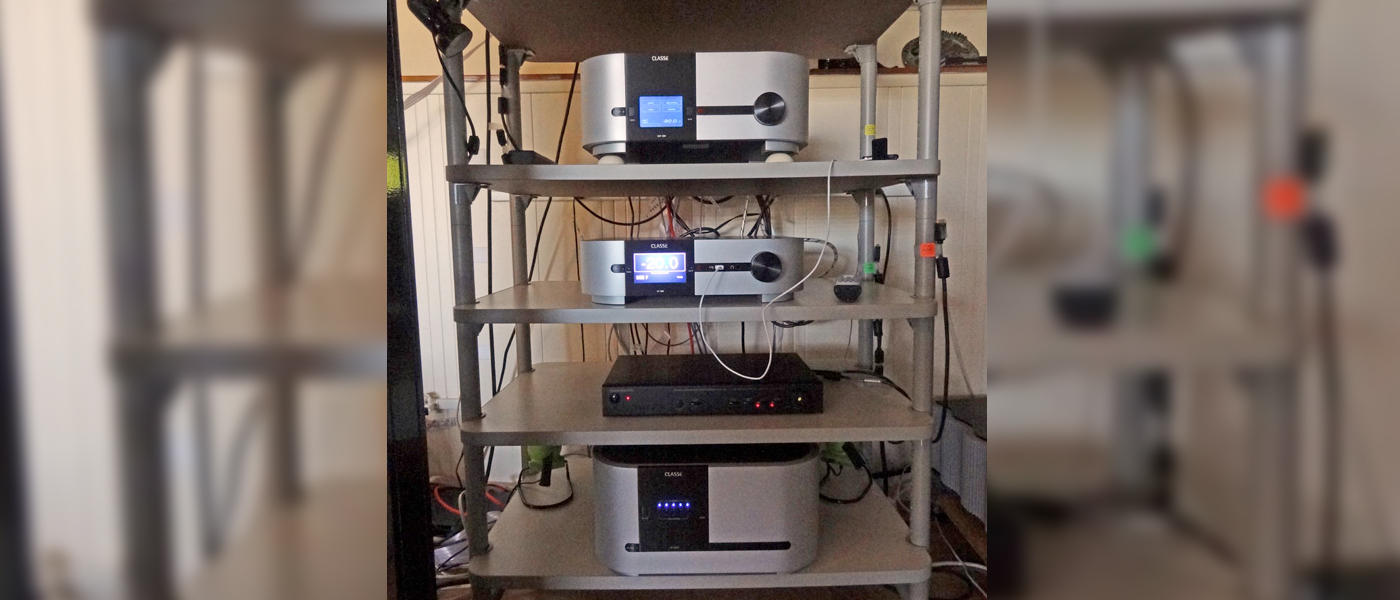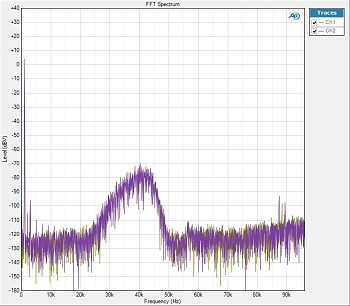EDITORIAL: Notes on Converting SACD Music Tracks to PCM in Disc Players
There has been a lot of discussion about how high a sampling rate that should be employed when a disc player converts SACD music track bitstreams to PCM before playing them. Many consumers would like to see 24/176.4 because SACD has a 100 kHz frequency response. However, in an SACD music track, a large noise hump is present between 25 kHz and 85 kHz that not only buries any audio signal that might be there (because it is most likely lower than the noise level or only a few dB above the noise level), but it can also interfere with the signal in the audible band.
Below are shown two spectra. The first one is an FFT analysis of a 1 kHz sine wave that was recorded using the SACD codec (DSD). The DSD track was then converted to PCM at 176.4 kHz sampling rate. Notice the large noise hump that begins at about 25 kHz and extends to 85 kHz. Converting SACD to PCM does not eliminate the noise that was in the DSD signal.
Compare the above spectrum with the one below, where a 1 kHz sine wave was recorded in DSD, and then that track was converted to PCM at 88.2 kHz sampling rate. Notice that the noise hump is much smaller now.
Keep in mind that (1) as adults, our upper limit of hearing is about 15 kHz. The 20 Hz – 20 kHz audible band really only refers to a young person. Our hearing deteriorates rapidly as we age; (2) although music does extend beyond 20 kHz, the signal level is quite low, and in fact, most likely lower than the noise band present in SACD music recordings; (3) out-of-audible-band noise can interact with the music signal in the audible band to its detriment.
Therefore, it is my opinion that when a disc player is playing an SACD and first converts the signal to PCM before decoding to analog, the conversion should be limited to 88.2 kHz. Converting SACD to 176.4 kHz PCM (or 192 kHz PCM) probably results in worse sound, not better.
J. E. Johnson, Jr.
Editor




